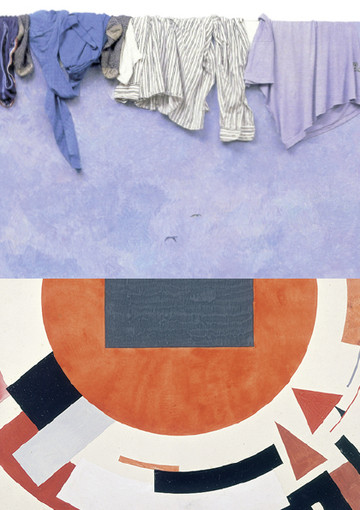El Lissitzky – Ilya and Emilia Kabakov
07 Feb - 11 May 2014
EL LISSITZKY – ILYA AND EMILIA KABAKOV
Utopia and Reality
7 February - 11 May 2014
El Lissitzky and Ilya Kabakov are representatives of the former Soviet Union, who stand for the two generations to follow that brought revolution and the implementation of the Communist visions, and who construct and deconstruct these visions by means of powerful visuals.
Ilya Kabakov engages in a dialogue with the leading thinker of the Russian avantgarde, El Lissitzky, who with his designs was key in shaping a period of upheaval, placing art directly in the service of social reform.
In more than 40 original works by El Lissitzky from 1919-1930, as well as in impressive reconstructions of his models as spatial total works of art, generally comprehensible geometric forms become tangible as constructivist and at the same time political visions.
In contrast, the installations, models, paintings and graphic works of Ilya and Emilia Kabakov draw a picture of down to earth reality paired with conceptuel art and metaphysics.
The exhibition at Kunsthaus Graz forms the beginning of this years thematic focus on "“Utopia inArt” and shows a new version of the exhibition shown in the Van Abbemuseum in Eindhoven in 2013, adapted specially for the building by Ilya and Emilia Kabakov.
The utopian architecture of the Kunsthaus, which lent to the ideal of a democratic social order the open, flowing form of an organic togetherness, inspired the artists to a stroll through two diametrical worldviews, arranged in semi-circles. Unlike in Eindhoven, where the two positions were in continuous direct confrontation, the artists have chosen to form two parallel universes thereby forming a strong image of construction and de-construction of fictions, realities and time periods.
The artists’ works are sub-divided into six themes, ranging from the awakening of space through to the unrealised utopia, and ultimately converge in one communal, large, central room.
The exhibition is accompanied by an extensive catalogue, produced by the Van Abbemuseum, Eindhoven, with texts by Charles Esche, Boris Groys, Anton Vidokle, and others.
Utopia and Reality
7 February - 11 May 2014
El Lissitzky and Ilya Kabakov are representatives of the former Soviet Union, who stand for the two generations to follow that brought revolution and the implementation of the Communist visions, and who construct and deconstruct these visions by means of powerful visuals.
Ilya Kabakov engages in a dialogue with the leading thinker of the Russian avantgarde, El Lissitzky, who with his designs was key in shaping a period of upheaval, placing art directly in the service of social reform.
In more than 40 original works by El Lissitzky from 1919-1930, as well as in impressive reconstructions of his models as spatial total works of art, generally comprehensible geometric forms become tangible as constructivist and at the same time political visions.
In contrast, the installations, models, paintings and graphic works of Ilya and Emilia Kabakov draw a picture of down to earth reality paired with conceptuel art and metaphysics.
The exhibition at Kunsthaus Graz forms the beginning of this years thematic focus on "“Utopia inArt” and shows a new version of the exhibition shown in the Van Abbemuseum in Eindhoven in 2013, adapted specially for the building by Ilya and Emilia Kabakov.
The utopian architecture of the Kunsthaus, which lent to the ideal of a democratic social order the open, flowing form of an organic togetherness, inspired the artists to a stroll through two diametrical worldviews, arranged in semi-circles. Unlike in Eindhoven, where the two positions were in continuous direct confrontation, the artists have chosen to form two parallel universes thereby forming a strong image of construction and de-construction of fictions, realities and time periods.
The artists’ works are sub-divided into six themes, ranging from the awakening of space through to the unrealised utopia, and ultimately converge in one communal, large, central room.
The exhibition is accompanied by an extensive catalogue, produced by the Van Abbemuseum, Eindhoven, with texts by Charles Esche, Boris Groys, Anton Vidokle, and others.

